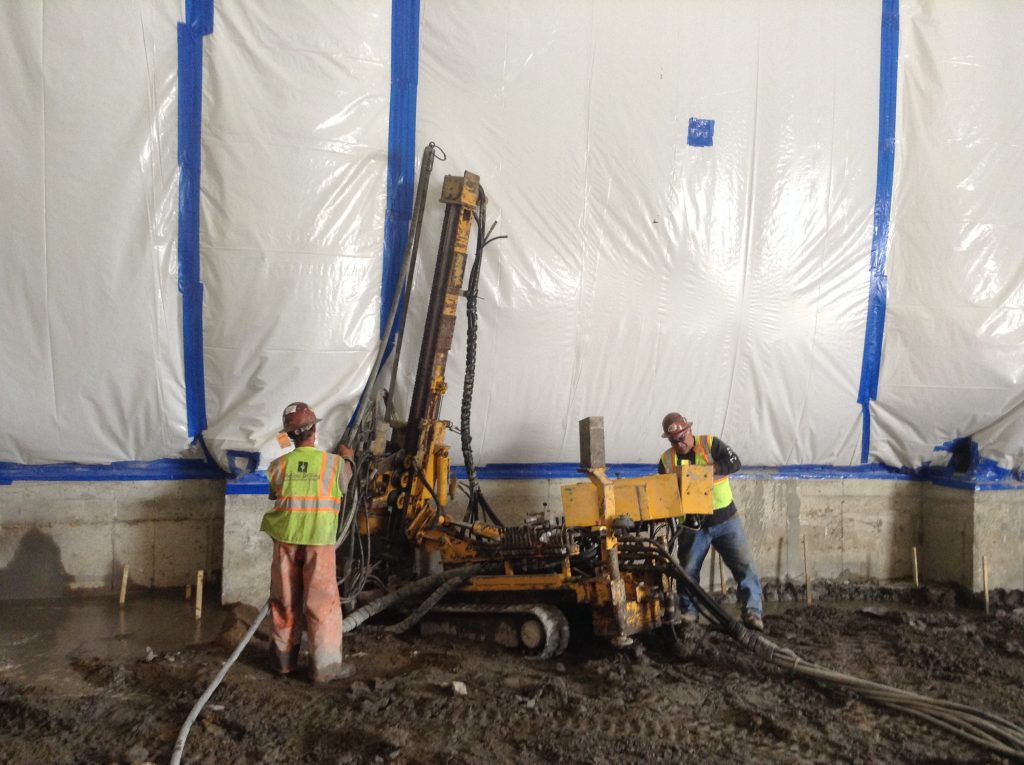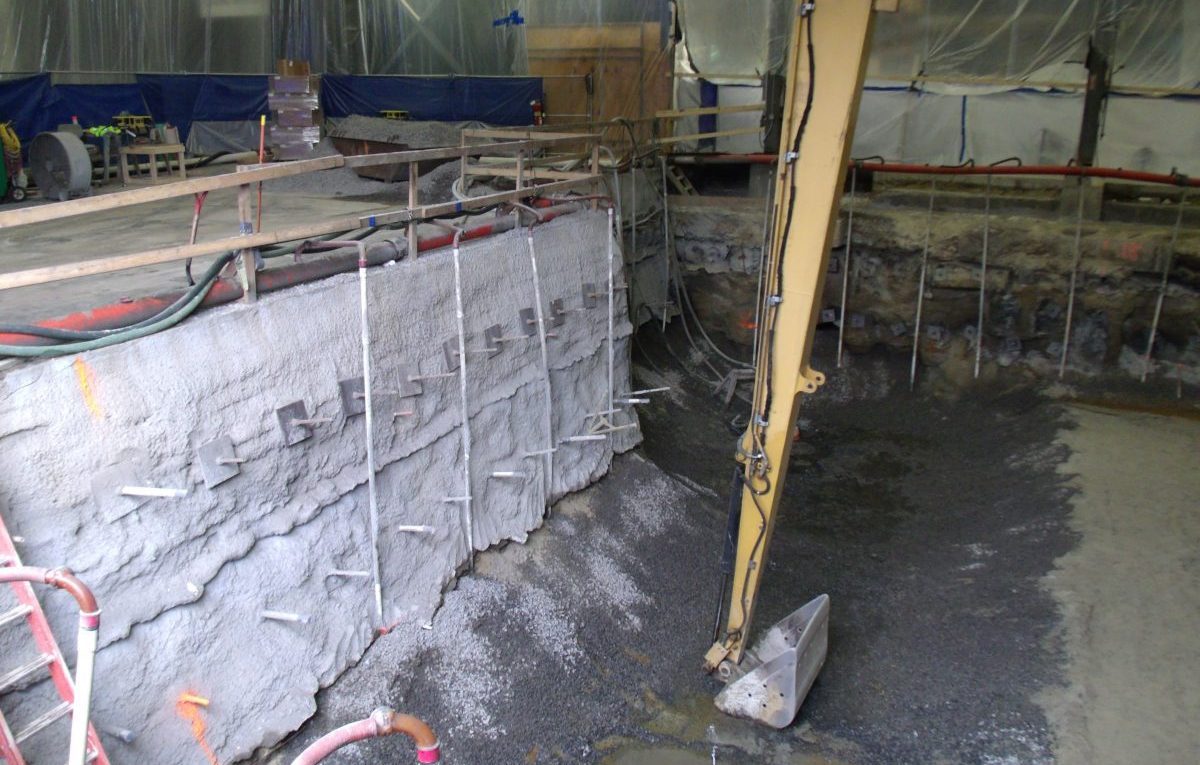Underpinning and Excavation Support
Introduction:
Modifications or upgrades within industrial facilities can be challenged by access and maintaining the integrity of the existing foundations. A specialty manufacturing facility near Boston, MA planned to add a new piece of equipment to their Massachusetts’ plant operations. The extremely large machine induced significant dynamic forces during operation, requiring construction of a new foundation capable of resisting these loads within the existing building.
Project Challenges:
The foundation for the new equipment was positioned adjacent to existing column and wall foundations in an approximately 3,000 square foot area. Excavation support installation had to be accomplished to a depth of over 17 feet below the existing slab elevation while working around these existing foundations, columns and walls. Further complicating the conditions, the new machine foundation was located at a lower elevation than the surrounding footings to develop sufficient embedment for the dynamic loads which required underpinning of the existing heavily-loaded footings. The project was also located in an area with multiple challenging soil layers including fill and loose outwash sand with contamination at depth. Besides the constrained work area, both interior and exterior operations were needed because two of the four walls of the excavation were located along the building exterior.
Geotechnical Design and Construction Solution:
The need for excavation support and underpinning of existing heavy footings utilized a combination of tools. Helical developed a solution combining jet grout column walls along three existing foundation walls with a soil nail and shotcrete wall along the fourth excavation wall since this area only supported a slab. In addition, the jet grout columns used multiple rows of soil nails reinforcement for the deep excavation and reduce the potential for movement of the existing structure.
Helical installed more than 150 jet grout columns for reinforcement along three of the existing foundation walls. The columns were designed as 36-inch diameter with a center-to-center spacing of 30 inches. All of the jet grouting was performed prior to excavation. The footings and grade beams spanning between footings were first cored to allow penetration of the jet grout tooling. The jet grout columns were then constructed through the footings. The layout allowed for overlapping columns creating a continuous perimeter transferring the structural loads to the underlying dense granular soils. Installation was divided into five phases (primary, secondary, tertiary, etc.) for constructing the large and complex pattern of overlapping columns with as many as 15 locations beneath a single footing. Soil nails were then installed through the constructed columns to anchor the jet grout wall.
The stand-alone soil nail wall used for excavation support on the fourth wall consisted of three rows of soil nails, accounting for 66 soil nails of the 200 required on the project. Titan 30/11 anchors (1.18-inch diameter) were installed to lengths of 18 feet behind the excavation face. The soil nail wall was finished with a steel-reinforced, 4-inch thick shotcrete facing. Verification of performance included pull-out tests on 5% of the completed anchors.
Due to the contamination challenges, Helical’s crew needed to wear appropriate PPE (personal protective equipment) for the duration of work performed within the excavation.


